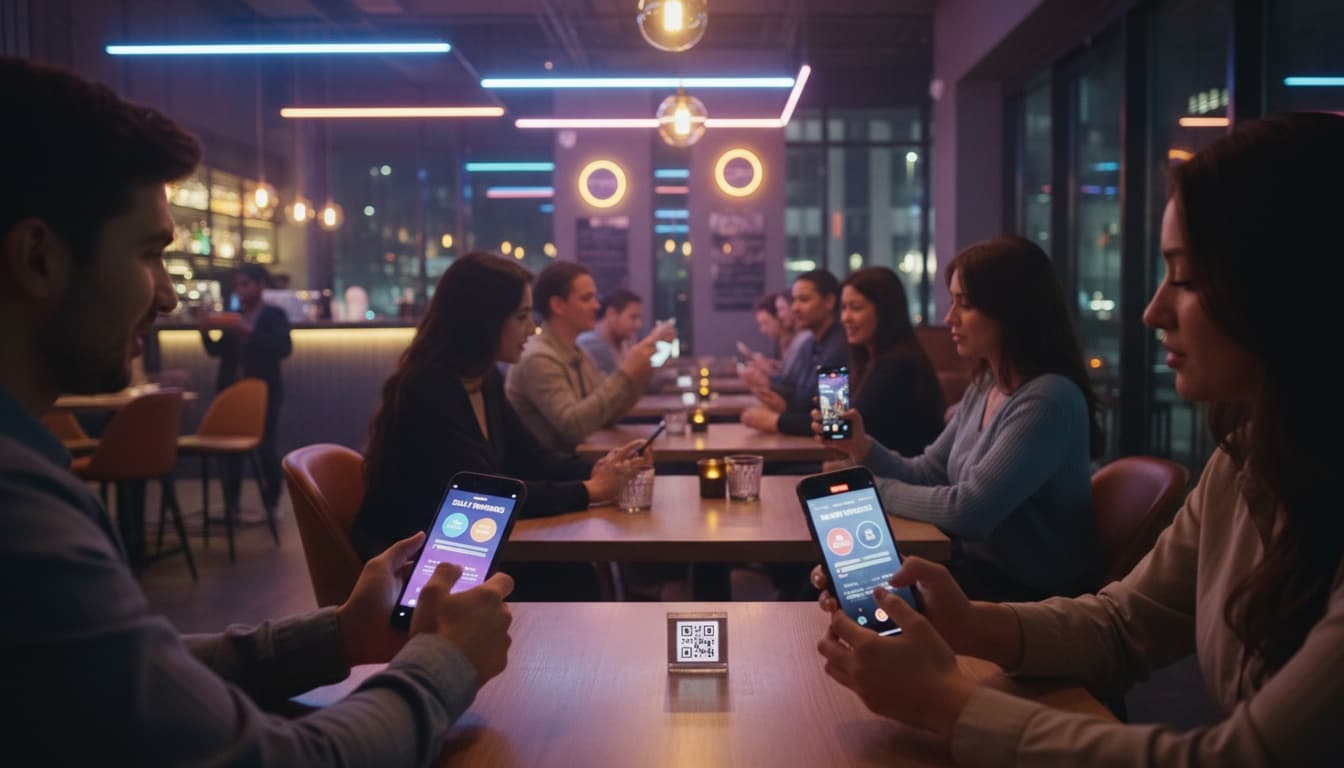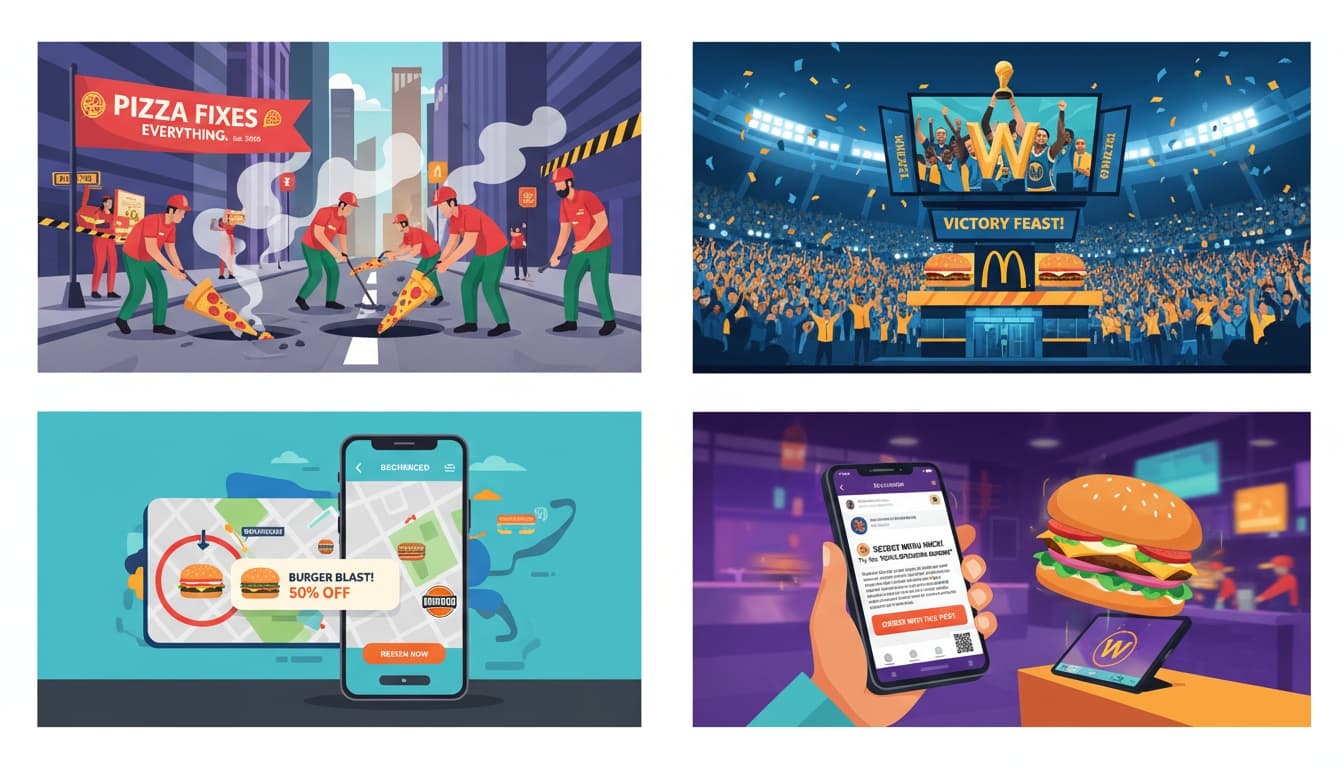Most restaurant marketing fails for a simple reason: it tries to shout louder about food instead of designing experiences people actually want to join, film and share. Creative restaurant campaigns that work treat marketing as a product. They use behavioral psychology, live moments and smart technology to turn guests into active participants, not passive recipients of promotions.
When that happens, the impact compounds. Emotionally connected customers visit more often, spend more and refer more friends. The restaurants that win consistently are the ones that build campaigns as strategic assets: testable, trackable and reusable systems that improve customer lifetime value and generate data the team can learn from over time.
The psychology behind creative restaurant campaigns

Creative campaigns that actually move numbers are built on a few simple psychological levers. They give people something interesting to show others, something they could lose if they do not act and a pattern of rewards that stays unpredictable enough to be exciting.
Social currency and identity expression
Dining is an identity choice as much as a functional one. Guests are not just buying food. They are broadcasting who they are, what they care about and which places reflect their taste. Campaigns that perform well give customers social currency: a story worth telling, a screenshot worth posting or a small flex that makes them look smart for discovering it early.
Instead of asking "How do we push this offer", top operators ask "What would make someone proud to show this campaign to a friend". That shift moves marketing away from interruption and toward facilitation of self expression.
Scarcity and loss aversion
People react more strongly to what they might lose than to what they might gain. Limited time mechanics, fixed campaign windows and capped rewards make participation feel urgent and meaningful. The key is to use real or clearly justified limits, not fake countdowns, so the brand still feels trustworthy.
Variable rewards that keep people coming back
Fixed punch cards and linear point systems are easy to understand but easy to forget. Variable rewards perform better when the goal is repeated engagement. When customers do not know exactly which reward they will unlock next but trust that good things happen when they participate, they are more willing to scan, play and share.
Real world creative restaurant marketing campaigns

Domino’s: fixing streets to fix delivery
Domino’s identified a real operational problem that every pizza customer understands: potholes ruin deliveries. Instead of running another quality campaign, they literally fixed roads in selected cities and stamped the asphalt with temporary branding.
The idea was absurd enough to be newsworthy but logical enough to feel authentic. The company improved delivery conditions while turning infrastructure repair into a living billboard. Analysts estimated tens of millions of dollars in earned media value for an initiative that also improved service quality in the field.
Why it worked: it solved a real problem, created a story bigger than the product and turned local operations into global conversation.
Taco Bell: tying free food to live sports
Taco Bell’s "Steal a Game, Steal a Taco" did not invent free food promotions. It connected a simple national reward to an emotional live event: if the road team won a game in the NBA Finals, everyone could claim a taco at participating locations.
Fans had a reason to care even if their own team was not playing. The brand essentially sponsored a collective moment of suspense with a clear, binary rule. Social media did the rest, amplifying reminders and celebrations when the condition was met.
Why it worked: it hooked into an existing cultural ritual, had a clear trigger and made the brand feel generous instead of purely transactional.
Chipotle: turning TikTok menu hacks into a product
Chipotle saw customers inventing unofficial menu combinations on TikTok, some of them operationally messy and hard for staff to process. Rather than shutting them down, the brand legitimated selected hacks and integrated them into the mobile app as structured items.
This move turned user generated content into a product roadmap. It signaled that the brand listens, gave creators a win and made operations simpler by standardizing chaotic custom orders.
Why it worked: it embraced customer creativity, removed friction for staff and used social platforms as a free R and D lab.
Burger King: geofencing around the competition
In the "Whopper Detour" campaign, Burger King offered a near free Whopper to anyone who downloaded the app and placed an order while physically standing near a McDonald’s location. The stunt used geofencing to turn competitor proximity into a playful challenge.
The result was a spike in app downloads, strong press coverage and a campaign that made the brand look both bold and technically sophisticated. Most importantly, it converted one time stunt participation into an owned channel: customers who now had the app installed.
Why it worked: it mixed game mechanics with competitive theater, then used a short term stunt to build long term infrastructure.
Designing your own creative restaurant campaign

Independent restaurants do not need national budgets to use the same logic. The key is to design campaigns like products. Start from the business problem, then layer in psychology, mechanics and measurement.
The IMPACT blueprint
Intent. Define one primary business objective. For example, fill midweek evenings, launch a new menu line or capture first party data from delivery only customers. Every other decision should serve that intent.
Market psychology. Map what actually motivates your audience: exclusivity, local pride, family memories, convenience, discovery, rewards or social proof. Select two or three levers to focus on instead of trying to use everything.
Platform integration. Decide where the campaign will live: QR codes on tables, receipts, flyers, packaging, mall signage, social profiles or delivery inserts. Make sure your POS, loyalty and analytics tools can see and track the traffic.
Authenticity. A small neighborhood restaurant should not behave like a global meme factory. Lean into what makes your place distinctive, whether that is a chef story, local sourcing, live music or community causes.
Conversion design. Remove steps. The path from "I see the campaign" to "I claim the reward" should be as short as possible. Autofill forms, pre select options and keep landing pages mobile first.
Testing. Launch with hypotheses and variants. Test different copy, reward mixes or entry points. Keep what actually drives repeat visits and higher checks.
Revenue modeling and prize economics
Creative campaigns only scale if the economics work. That starts with expected value. For every prize tier, combine the reward cost with the probability of winning, then sum across all tiers. The result should be lower than the incremental contribution margin you expect from participants.
If your average campaign participant spends more, visits more often or brings friends, you can afford more generous structures. If margins are tight, you may favor non monetary rewards such as priority reservations, secret menu access or community status.
Return on investment should consider more than immediate sales. Brand lift, new first party data, growth in high value segments and organic social reach all contribute to long term value. The best campaigns are reusable templates: once you validate mechanics, you can re skin them for new seasons and menus at much lower cost.
Execution, technology and operations
Behind every successful stunt there is usually a boring checklist. Creative ideas need solid infrastructure to avoid frustrating guests or overwhelming staff.
On the technology side, dynamic destinations are critical. If every code or link goes to a static page, you lose the ability to adjust messaging, rewards or routing in near real time. Analytics should track the full funnel: scans, visits, sign ups, redemptions and repeat visits.
On the operations side, teams need clear playbooks. Front of house staff should know how to explain the campaign in one sentence, how to resolve common questions and how to upsell aligned items. Managers should know exactly which numbers they watch daily and which levers they can pull if engagement drops.
Common pitfalls and how to avoid them
Cool idea, weak alignment. A viral mechanic that does not fit your brand or guests will feel off. Start with your audience and positioning, then brainstorm.
Campaigns that are too complicated. If staff need a script and customers need a diagram to understand the rules, participation will collapse. Favor simple triggers and clear rewards.
Short term thinking. Stunts that drive one weekend of traffic but leave no data, no reusable assets and no reason to return waste potential. Add at least one element that builds long term infrastructure.
No measurement. Without unique links, codes or structured questions at the point of sale, it becomes impossible to attribute results. Design tracking before printing materials.
Measurement and attribution in practice
At a minimum, every creative restaurant campaign should track three groups of metrics. First, top of funnel activity such as impressions, scans, landing page visits and social mentions. Second, hard outcomes such as covers, average check, add on orders and visit frequency. Third, strategic indicators such as new sign ups to a data program, repeat participation and shift in high value segments.
Where possible, compare participating guests to a control group. That could be similar days without the campaign, parallel locations that are not running it or segments that were not exposed to the mechanic. Over a few cycles, this data becomes an internal playbook of what actually works for your market instead of generic industry advice.
The restaurants that keep winning are not the ones with the flashiest single stunt. They are the ones that treat campaigns as experiments, learn from every run and build a system where creativity and discipline reinforce each other.
Turn restaurant campaigns into trackable revenue
If you want guests to scan, play and come back more often, you need campaigns that are dynamic, measurable and easy to run on busy shifts. VISU helps restaurants launch QR based experiences that turn attention into repeat visits, data and revenue.

